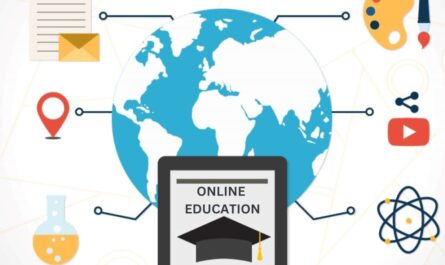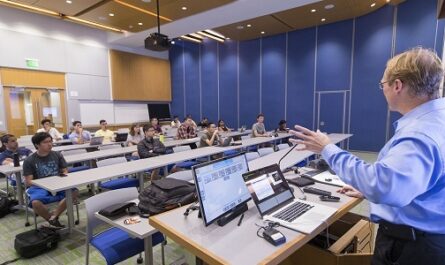The Coronavirus pandemic has significantly influenced pretty much every area, with schooling encountering probably the most emotional changes. Schools overall needed to move to remote advancing practically for the time being, speeding up the reception of innovation and featuring the two its true capacity and limits. As we push ahead, the job of innovation in schooling keeps on developing, promising a fate of advancement and inclusivity.
The Accelerated Digital Transformation
Remote Learning: A Necessity Becomes a Norm
During the pandemic, remote advancing immediately progressed from a brief answer for another standard. Instructive foundations needed to incorporate different advanced devices quickly, making stages like Zoom, Google Study hall, and Microsoft Groups fundamental for virtual guidance. This shift showed innovation’s capacity to broaden schooling past customary study halls, conquering geological impediments and making gaining available from almost anyplace.
Innovations in Educational Technology
The pandemic catalyzed huge progressions in instructive innovation. The scope of accessible instruments extended, including complex learning the executives frameworks (LMS) and intelligent computerized reading material. Man-made consciousness (artificial intelligence) and AI began assuming pivotal parts in customizing growth opportunities, assessing understudy execution, and conveying constant criticism. Also, Computer generated Reality (VR) and Increased Reality (AR) advancements presented vivid opportunities for growth that were once considered far-off.
Enhancing Accessibility and Inclusivity
Bridging the Digital Divide
The pandemic brought the computerized partition into sharp concentration, as understudies from underserved foundations confronted difficulties with restricted admittance to innovation and dependable web. This featured the pressing requirement for impartial admittance to computerized assets. Numerous states and associations answered by sending off drives to give gadgets and network to impeded networks. Continuous endeavors intend to guarantee that all understudies benefit from mechanical headways, no matter what their financial status.
Accessibility Features in Educational Technology
Innovation holds critical potential to help understudies with incapacities. Elements like screen perusers, discourse to-message programming, and adaptable points of interaction are making instructive substance more open. The advancement of versatile innovations that address individual advancing necessities has sped up, offering new open doors for understudies with assorted prerequisites to connect really with instructive materials.
The Evolution of Teaching Methods
Blended Learning: A Hybrid Approach
Planning ahead, numerous instructive organizations are embracing a mixed learning model that consolidates face to face and online guidance. This half breed approach use the qualities of both conventional and computerized strategies, giving adaptability and permitting understudies to advance at their own speed. Mixed learning upgrades the instructive experience by consolidating different educational procedures and assets.
The Role of Data Analytics in Education
Information examination has turned into a strong resource in training, empowering teachers to screen understudy progress and recognize regions for development. Learning investigation offer bits of knowledge into understudy commitment, execution patterns, and educational plan viability. By investigating this information, instructors can go with informed choices to refine showing techniques and better meet individual advancing necessities.
Challenges and Considerations
Ensuring Quality and Security
As dependence on innovation increments, guaranteeing the quality and security of computerized instructive devices has become critical. Issues like information security, network safety, and content exactness need addressing to safeguard understudies and maintain the respectability of instructive organizations. Instructors and managers should cautiously choose legitimate innovation suppliers and execute solid safety efforts.
Teacher Training and Support
The quick joining of innovation has put huge expectations on teachers, who should consistently adjust to new apparatuses and strategies. Powerful instructor preparing and support are imperative to assist teachers with utilizing innovation really. Proficient improvement projects ought to offer commonsense direction on coordinating new instruments into showing rehearses and remaining refreshed with mechanical progressions.
The Future of Technology in Education
Personalized Learning Pathways
Looking forward, innovation is set to additionally customize growth opportunities. Artificial intelligence controlled stages will investigate individual understudy information to make custom fitted learning pathways, giving assets and exercises that address every understudy’s one of a kind qualities and shortcomings. This approach can possibly upgrade understudy commitment and results by focusing on unambiguous advancing necessities.
The Rise of EdTech Startups
The EdTech sector is booming, with numerous startups developing innovative solutions to improve education. From gamified learning platforms to AI-driven tutoring systems, these startups are expanding the possibilities of technology in the classroom. As competition intensifies, we can expect ongoing advancements and diverse offerings that cater to various learning styles and needs.
The Integration of Emerging Technologies
Arising advancements like blockchain and 5G are probably going to impact the fate of schooling. Blockchain might offer secure, irrefutable records of scholarly certifications, while 5G innovation vows to improve availability and backing more vigorous computerized growth opportunities. As these advances become more pervasive, they will add to the development of instructive practices and amazing open doors.
Conclusion
The job of innovation in training has changed essentially because of the pandemic. What started as a dire shift to remote learning has developed into a more incorporated utilization of computerized instruments that upgrade openness, customize learning, and work on instructive results. As we explore the post-pandemic scene, addressing the related difficulties while embracing innovation’s capability to drive development and inclusivity is fundamental. The eventual fate of training is profoundly entwined with innovation, and its continuous advancement will shape how we learn and show before long.



